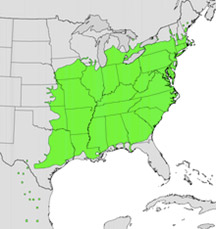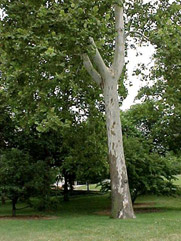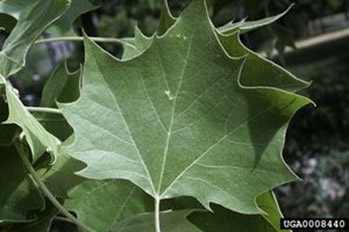Sycamores typically grow in deep moist soils near rivers, streams, and lakes.
A sycamore can grow to massive proportions and can become more than 6 feet in diameter and more than 120 feet tall. The largest sycamores have been measured to be more than 160 feet tall and nearly 13 feet in diameter.
The sycamore tree is often divided near the ground into several secondary trunks. Spreading limbs at the top make an irregular, open crown. Roots are fibrous. The trunks of large trees are often hollow.
The lower bark is typically dark reddish brown, and broken into plate-like scales. But higher up on the tree, the plates peel off leaving a smooth white or light grey surface that is very distinctive.
The leaves are fairly large alternate 5-lobed leaves with palmately arranged veins. The leaf petioles are very distinctive because they have a deep circular concavity at the base that normally covers the buds.


